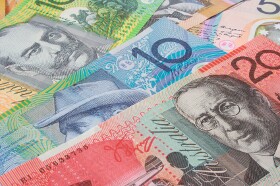
The Australian dollar was trading mostly higher against its major rivals today. With no clarity as to whether the United States and China will be able to reach a trade deal before the December 15 deadline, it is hard to say what drove the Aussie higher. Domestic macroeconomic data was certainly not the reason for the good performance as the latest reports were rather bad.
The Australian Industry Group/Housing Industry Association Australian Performance of Construction Index dropped to 40.0 in November from 43.9 in October. Being below the neutral 50.0 level, the index showed that the sector declined with an accelerating pace last month. The report commented on the result:
November was the 15th consecutive month of contraction in the Australian PCI® with aggregate industry activity remaining firmly entrenched in negative territory and overall new orders falling more sharply. This on-going weakness in business conditions was associated with a steeper fall in employment and a continued reduction in deliveries from suppliers.
Released yesterday by the Australian Bureau of Statistics, retail sales showed no growth in October from September on a seasonally adjusted basis. That was a disappointment to market participants as analysts had predicted an increase of 0.3%. The sales rose by 0.2% in September.
The seasonally adjusted trade balance surplus shrank to A$4.5 billion in October from A$6.85 billion in September. Analysts had predicted the indicator to stay little changed.
AUD/USD gained from 0.6832 to 0.6852 as of 12:22 GMT today. EUR/AUD dropped from 1.6243 to 1.6189. AUD/JPY edged up from 74.31 to 74.39.
If you have any questions, comments, or opinions regarding the Australian Dollar, feel free to post them using the commentary form below.